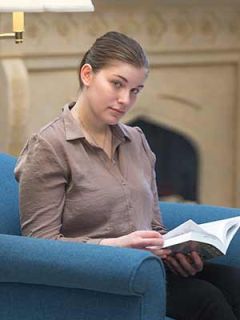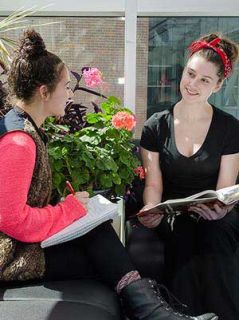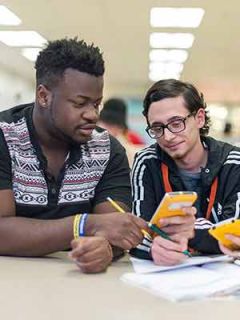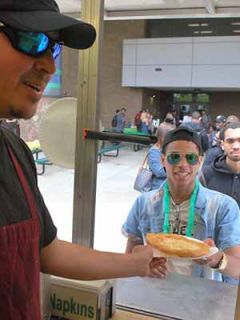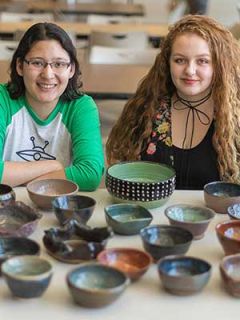The Center for Early Childhood Education at NVCC
About our Curriculum
- Home
- Student Resources
- Academic Support Resources
- The Center for Early Childhood Education at NVCC
- About the Curriculum
Discovery-Based, Reggio Emilia Inspired Learning
Since 1998, the Center for Early Childhood Education at NVCC has been inspired by the Reggio Emilia Approach to teaching young children. Emergent Curriculum, artistic explorations and small group work based on negotiations between the interests of the children and teachers are significant tenets of this pedagogy.
The basic principles of the Reggio Emilia Approach include:
- The Image of the Child~Adults see each child as having unique strengths and potential. In the classroom, children are encouraged to construct their own knowledge through exploration, self-expression, and interactions with their teachers and peers.
- Symbolic Representation~As a means of enhancing children's cognitive, social, and creative development, a wide array of media and activities are introduced in the context of an integrated curriculum. These help children represent their ideas and emotions through many "languages", including spoken and written words, visual arts, drama, movement, and more.
- Education Based on Interaction and Collaboration~Education is experienced as a continuous, cooperative interaction between those involved in the school community. Collaboration takes place between teachers and children, children and peers, teachers and other teachers, teachers and families, and the school and the community. All are important in the educational process.
- The Project Approach~The children learn through cooperating with other children and their teachers in long term projects based on children's interests and the arts as a central feature of the program. Projects may be based on either teachers' or childrens' initiatives, but always develop in response to the children's interests and curiosity as teachers and children engage in the co-construction of understandings and concepts.
- The Importance of Time~Projects are not fragmented or rigid by a predetermined time frame; rather they develop and build upon one another over time, as the children "revisit" their original work and ideas, refining them further through new experiences, activities, and forms of expression. Time is also important in building sustaining, collaborative working relationships with peers and teachers.
- The Role of the Teacher: Teacher as Partner~The teacher is a partner in learning with the child. The teacher's role is to act as resource, provocateur, and partner in learning with the children. Children's work, play and discussions are documented through notes, photos, tape recordings and videos. These are carefully reviewed by the teachers and guide their curriculum and project decisions based on the children's interests, ideas, and developmental readiness to acquire new skills.
- The Role of the Parents~Parents are active participants in the activities of the school and in their children's projects. Parents are welcome into the schools and collaborate with teachers in curriculum and administrative decisions. They give of their time and talents and serve as advocates for the schools in the community.
- The Role of the Environment~Through conscious use of space, color, natural light, attractive and appropriate learning materials and displays of children's work, the environment serves as another teacher and is inviting to children, teachers, families, and visitors.
Through this approach the Connecticut State Early Learning and Development Standards are embedded into children's play; high quality, child-centered activities, proposals, and provocations; and care and routines.
Teachers collaborate in creating Learning Experience Plans that reflect:
- An emergent curriculum
- Bloom's Taxonomy of higher order thinking
- Early Literacy Skills: Oral Language Development (expressive and receptive), Alphabetic Code, Print Knowledge and Opportunities for Varied Reading Experiences
- Musical Experiences including singing, instruments, and movement
- Literacy Experiences including listening to a read story and a telling of a story, Flannel board stories, and acting out stories


